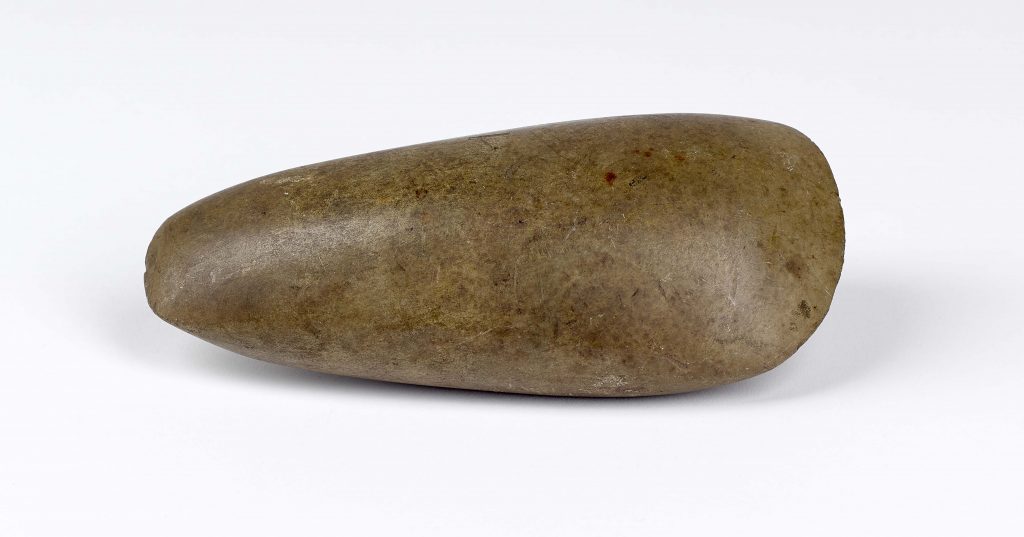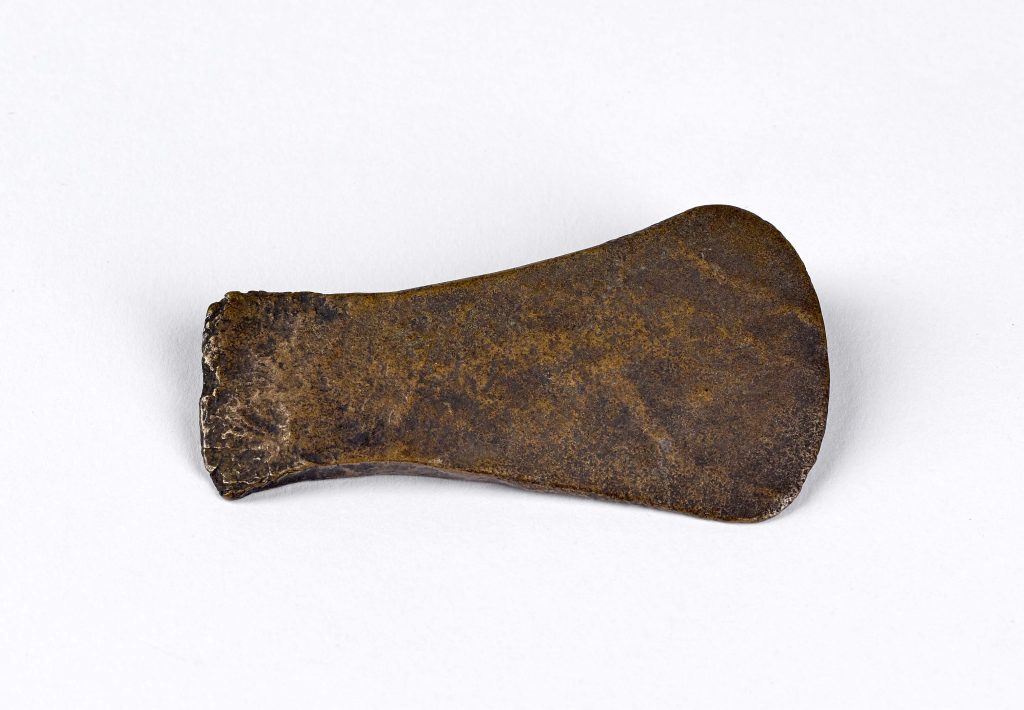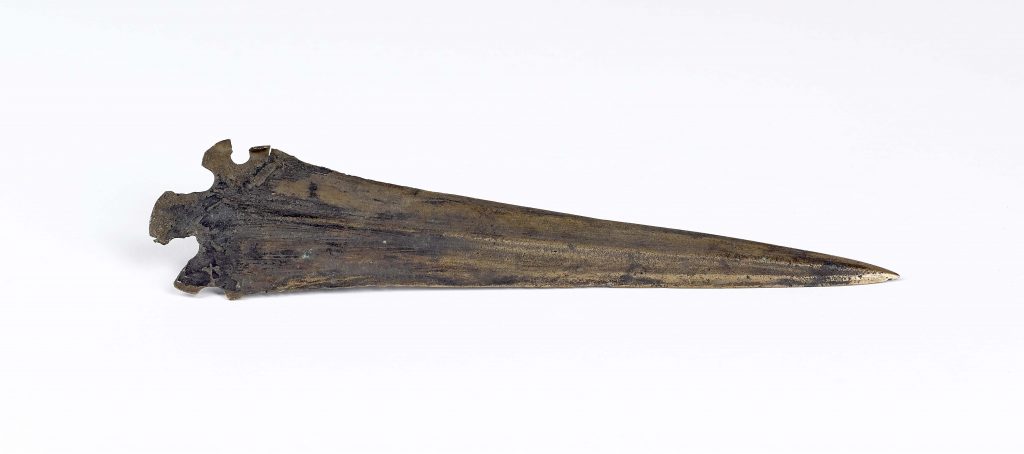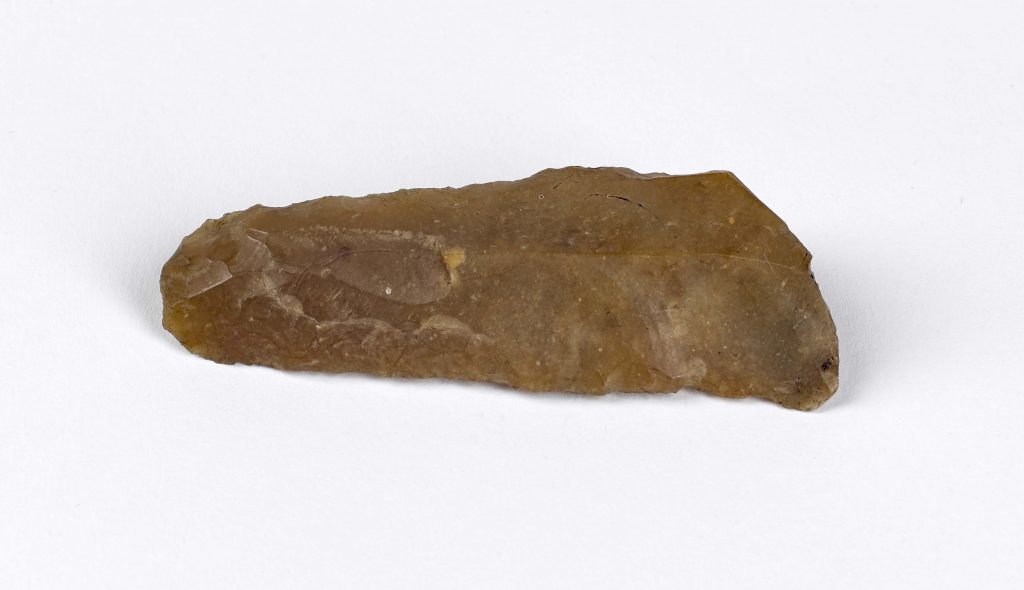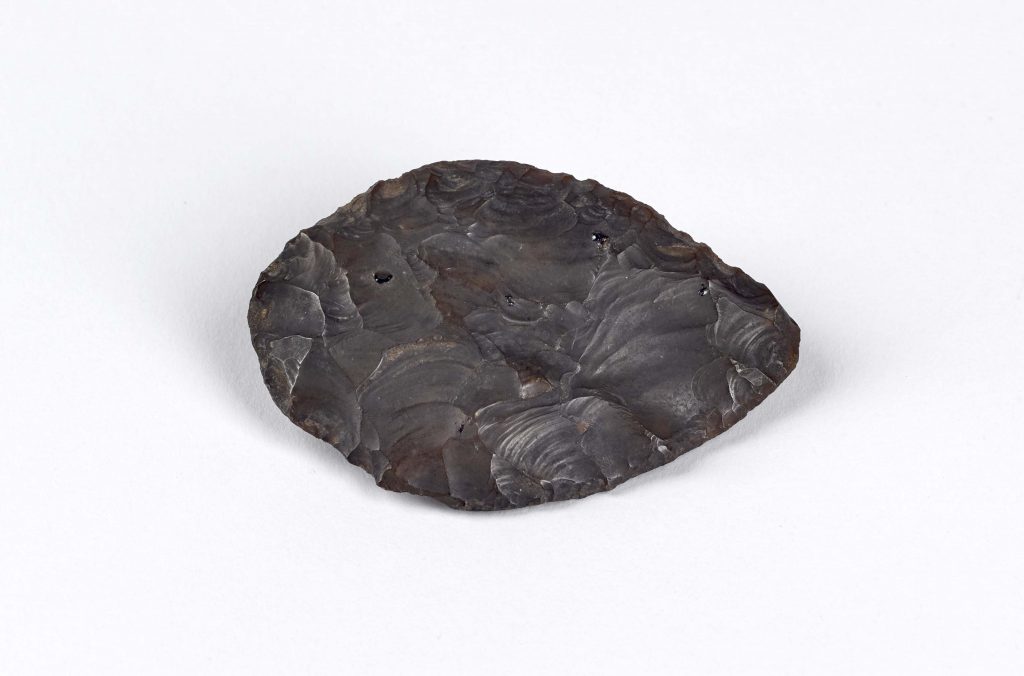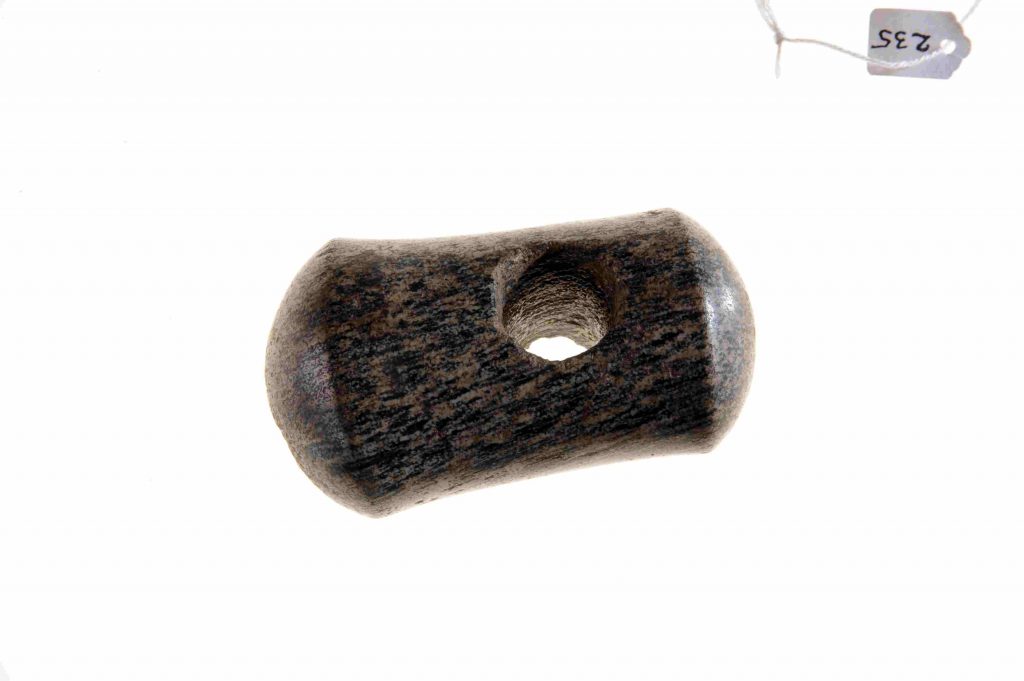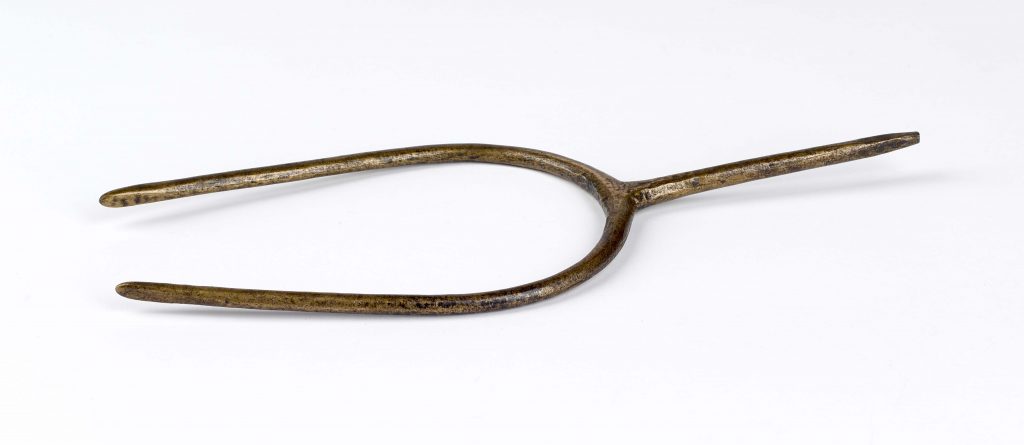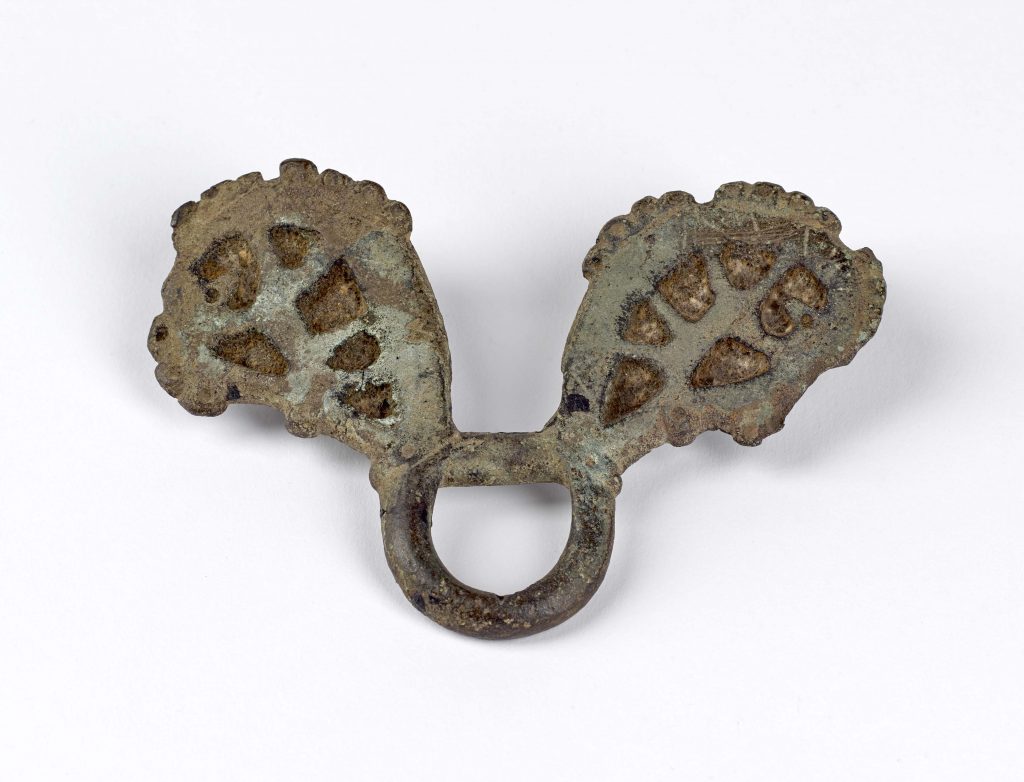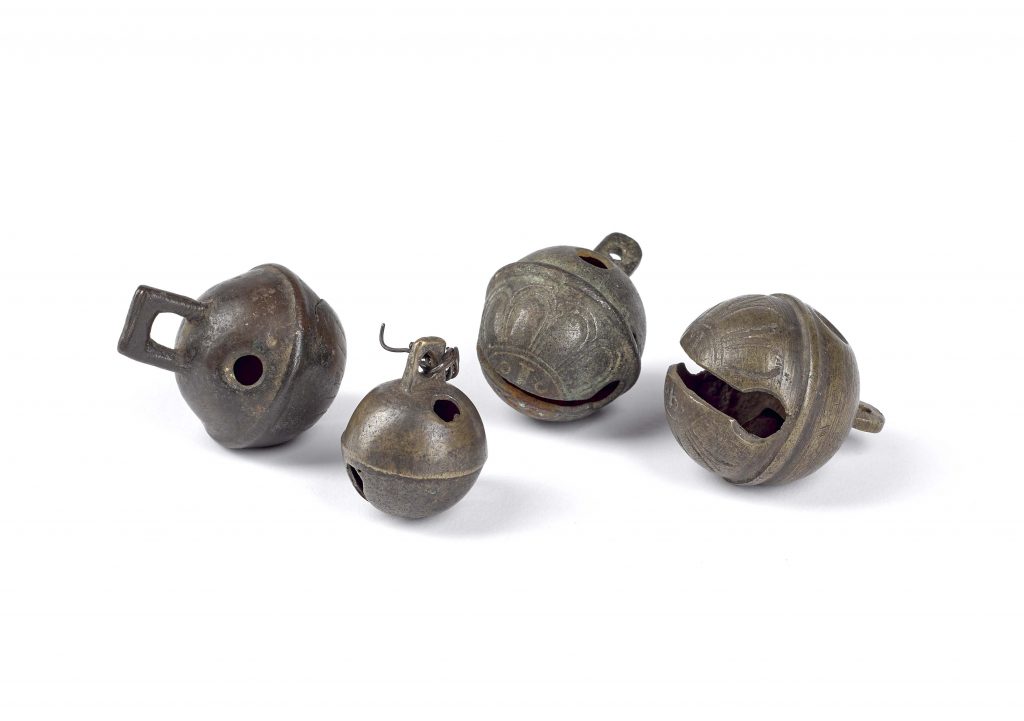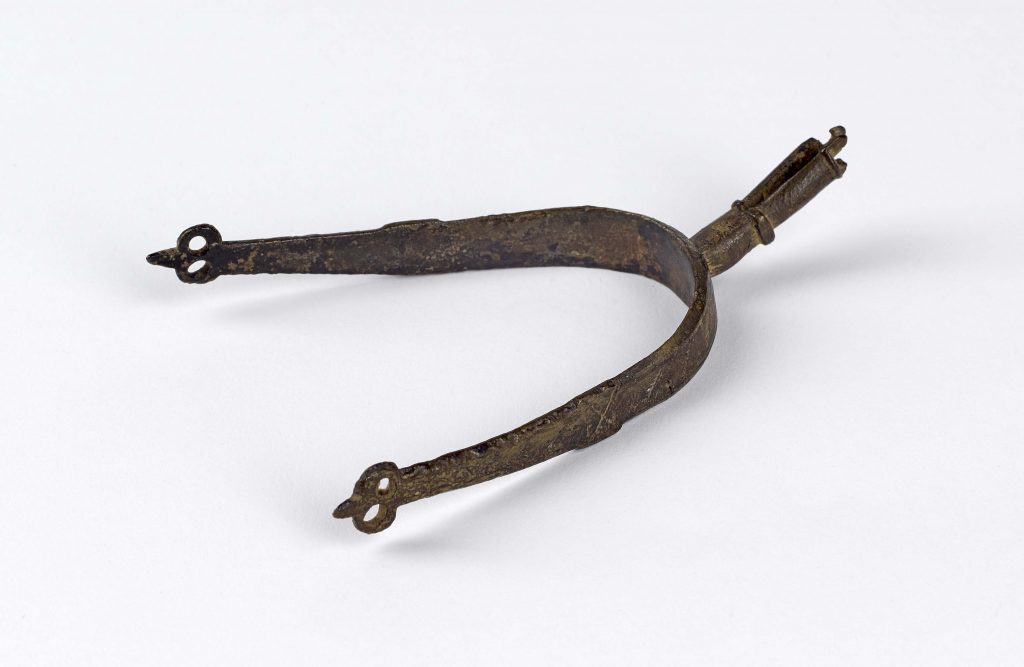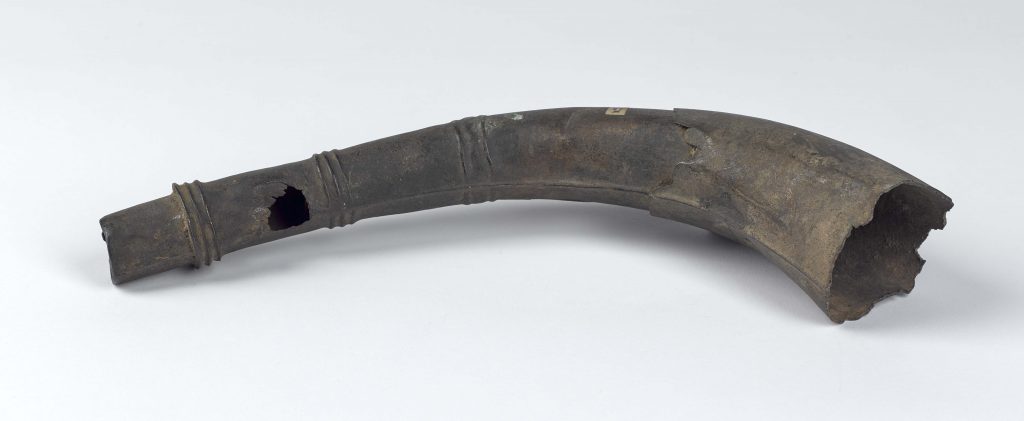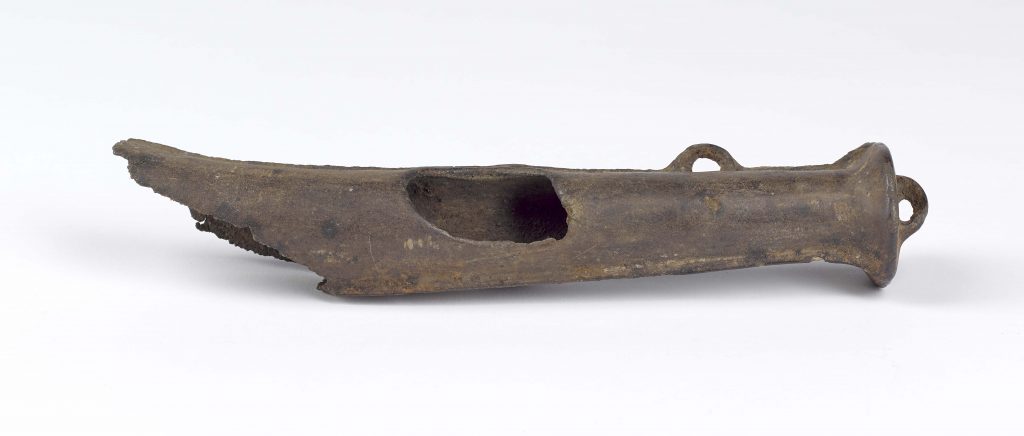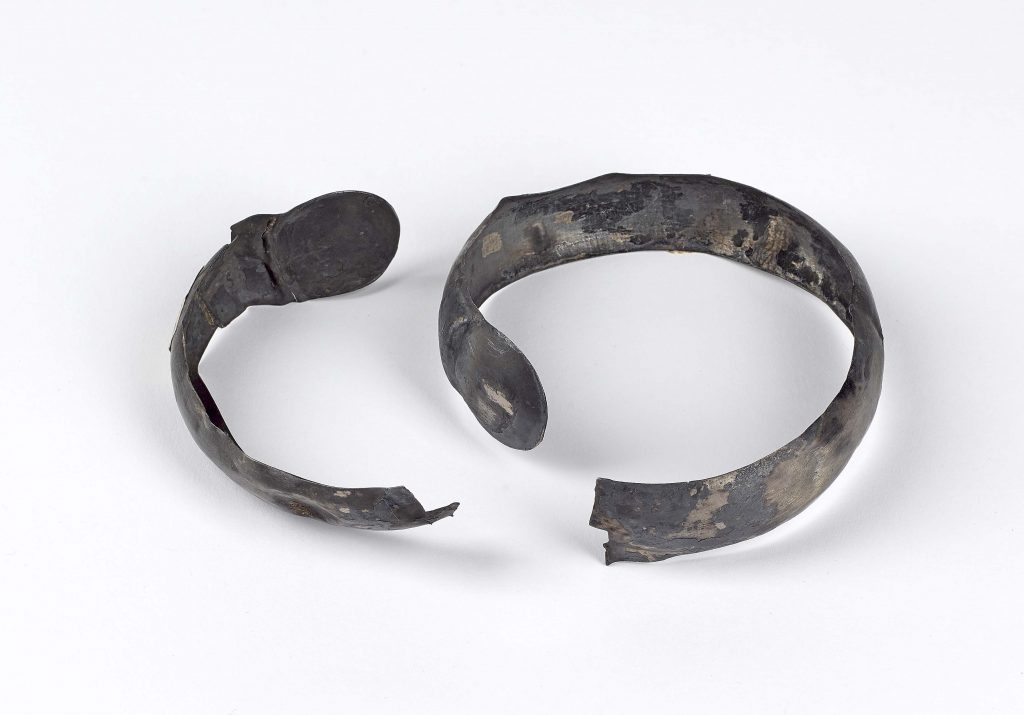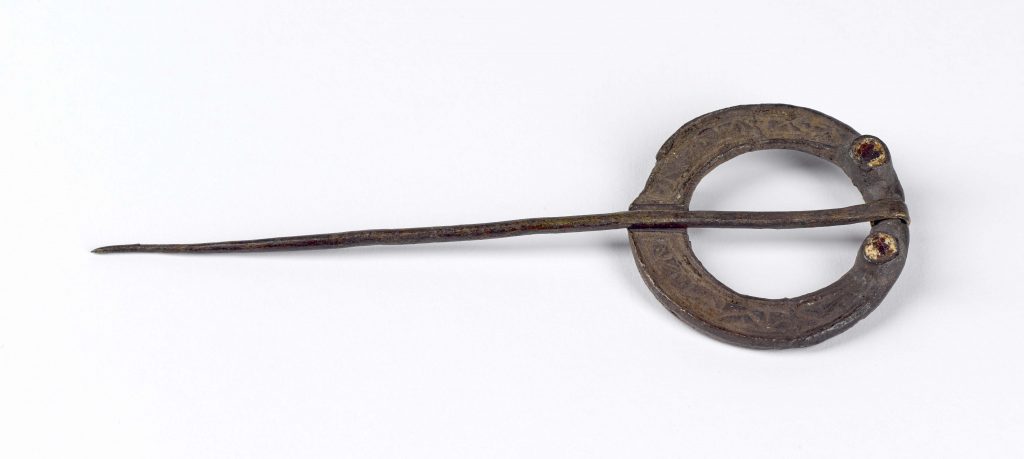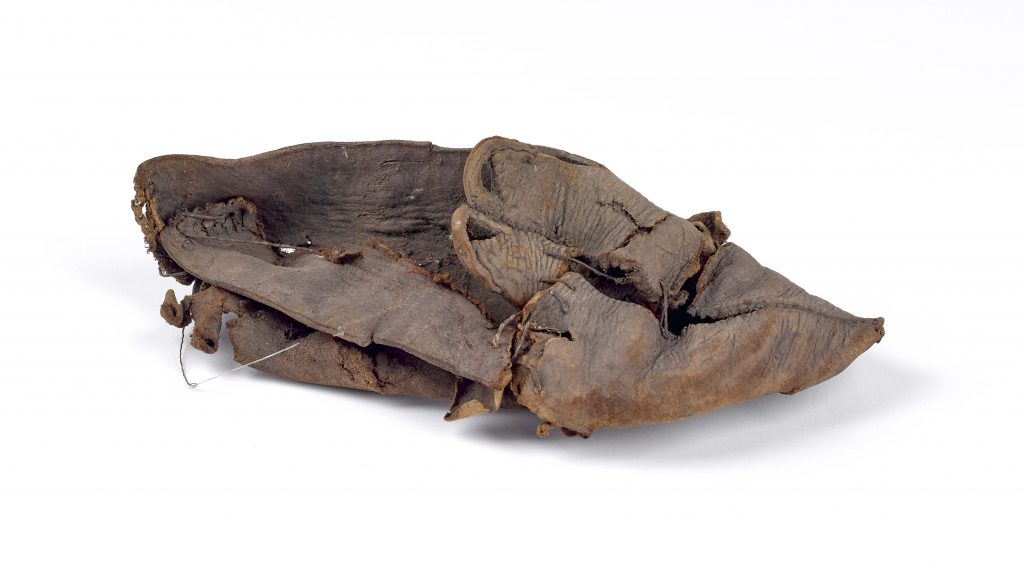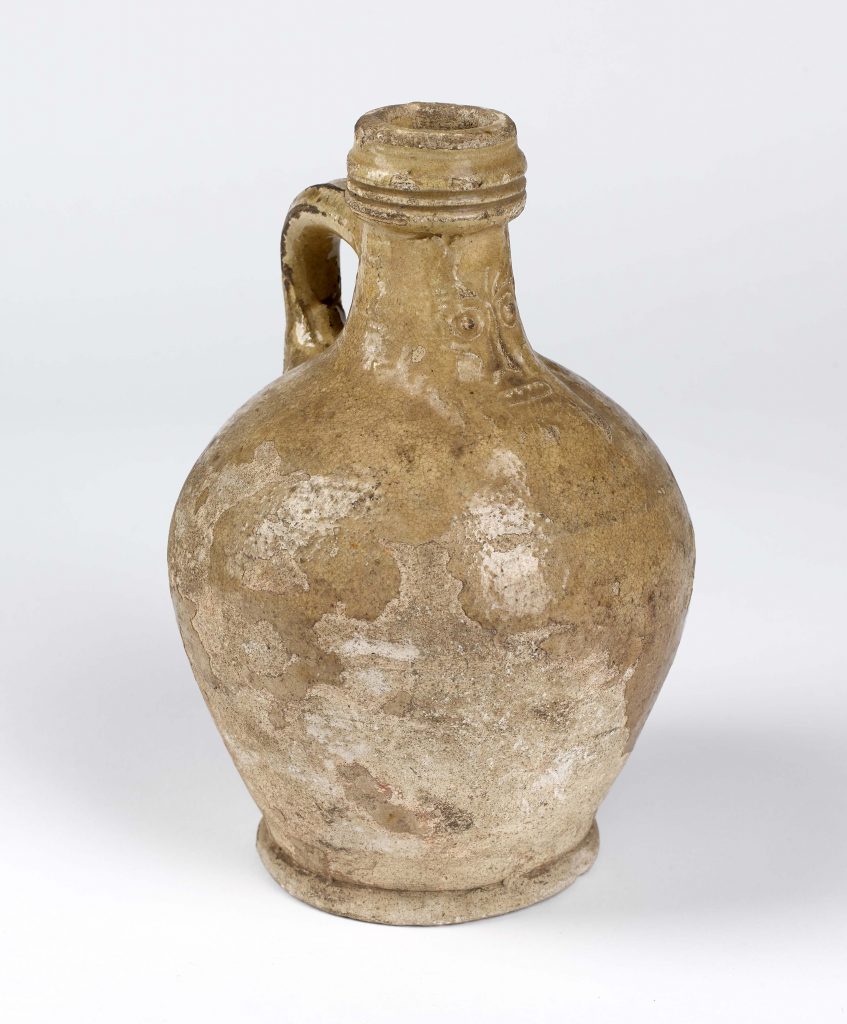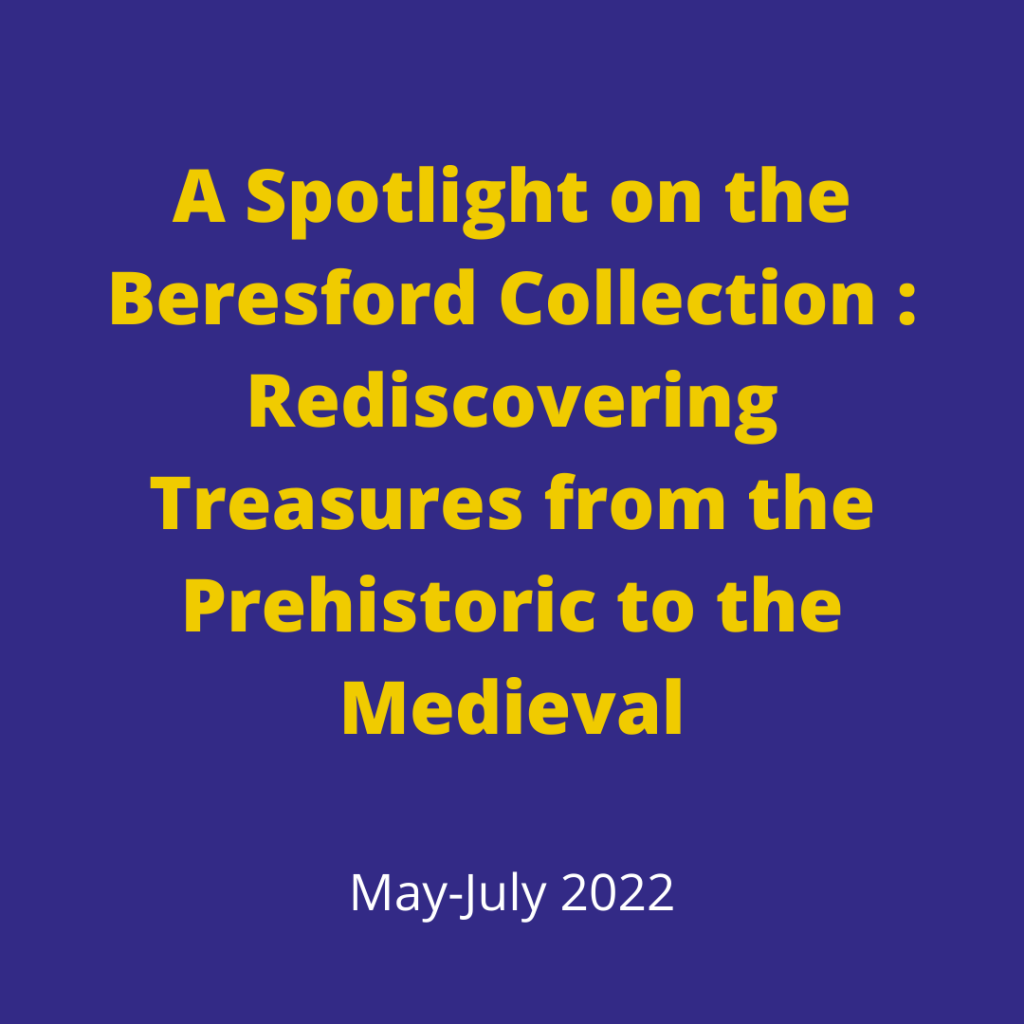
A Spotlight on the Beresford Collection : Rediscovering Treasures from the Prehistoric to the Medieval is an exhibition on Archbishop Beresford’s archaeological collection.
Marcus Gervais Beresford (1801–1885) was a keen collector of antiquities dating from the prehistoric to medieval times. His son bequeathed his father’s collection to the Library in 1886. The collection is on display, both in the original cabinets in the Long Room, and in No 5 Vicars’ Hill.
This exhibition shows an eclectic mixture of artefacts together with some new insights into their use.
Beresford was born in Dublin into an affluent family. He was ordained, and served, in the Church of Ireland, and was appointed Archbishop of Armagh in 1862.
He was a keen collector of antiquities dating from the prehistoric to medieval times.
His son, George de la Poer Beresford, bequeathed his father’s collection to the Library after the Archbishop’s death in 1885. The collection is on display, both in the original cabinets in the Long Room, and in No 5 Vicars’ Hill.
The collection is believed to be mostly Irish, but unfortunately Beresford’s catalogue is missing. Former Curator of the Armagh County Museum, Roger Weatherup, researched the collection extensively and created an inventory for the collection.
This exhibition shows an eclectic mixture of artefacts together with some new insights into their use.
Early Axes
The following axe-heads date from the Neolithic, or Stone Age, through to Late Bronze Age.
Over time knowledge of the usefulness of metals improved and people began to cast bronze weapons and tools rather than carving them out of stone.
Socketed axe Late Bronze Age, circa 700 BC The last two axes demonstrate advancements in the technique of producing axe-heads and attaching them to the wooden handle.
Early Weapons and Tools
Bronze dagger Early Bronze Age, circa 2000 BC These were ideal for a stabbing motion. The wooden handle has not survived.
Bronze sword Late Bronze Age, circa 700 BC This is a much sturdier weapon than the Early Bronze Age dagger.
Leaf-shaped flint arrowhead 8000-2700 BC The earliest flint arrowheads in Ireland date to the Mesolithic period, when several tiny slivers of flint were inserted into a wooden shaft like a harpoon. These were replaced in the Neolithic and Bronze Age when a single piece of flint acted as the arrowhead.
Flint flake These are tools made by carefully chipping off pieces from a larger stone until the desired size is achieved. They could be extremely sharp.
Local Discoveries
The first three artefacts were found in 1863 in the townland of Botera, four miles west of Omagh. They were located in an old earthen fort in a bog.
Stone cannonball The cannon ball weighs just over 1kg. It was found by a Captain Robinson in the bed of the River Bush in Co. Antrim. These cannonballs were used in warfare from the 1300s until about the 1600s and could cause devastating injuries.
Equestrian Ornamentation
The details on the equestrian objects in this exhibition were kindly provided by Dr Rena Maguire, based on her PhD research of Irish Iron Age Equestrian Equipment.
Harness Y-Piece Iron Age It has been common practice in all cultures for the elite to bedeck their horses with decorative flourishes and Ireland in the Late Iron Age was no different. This Y-piece, found in County Clare, is part of a bridle which fitted under the chin.
Bronze cheek-piece Circa AD 1200 This is an ornate cheek-piece, the style reflecting earlier Hiberno-Scandinavian influences. The cheek piece stopped the mouthpiece from sliding within the mouth of the horse.
Bronze Stirrup AD 1000-1300 Stirrups spread to Europe from around AD 700, and were quickly adopted by cavalry, as they offered more balance for riders. This stirrup may have been used by someone quite wealthy, judging by its decoration.
Bronze Harness Bells AD 1400-1700 This is a collection of little ‘rumbler’ bells, or crotals. They were used on bridles, made to tinkle cheerfully as the horse and rider moved. Sometimes these bells were attached to vehicles and clothing. Bells of this type were produced in alloys of tin, pewter and copper.
Music and Dress
Trumpet Late Bronze Age, circa 800 BC This type of trumpet is known as a ‘side blow’. It is believed a piece of wood or bone would have been placed in the side opening in order to produce a sound. It is not known if these trumpets were used ceremonially or for communication, such as during battle.
Silver armlet Circa AD 500 Armlet, now in two pieces. This was found in Co. Cavan and is unique in Ireland as all other known examples are from Eastern Scotland.
Dress pins Circa 100 BC These two bronze dress pins would have been used to fasten clothes at the shoulder.
Miscellaneous
Shoe Circa AD 800 A shoe made from a single piece of leather, approximately a size seven in today’s sizes.
Maori ceremonial club A ceremonial club, known as a mere, from New Zealand. Made from nephrite jade greenstone, the Maori people often gave them as gifts. They feature on the Kotahitanga flag of Maori unity.
Bellarmine or Bartmann jug Circa AD 1600 A Bellarmine or Bartmann jug most likely from Germany. These were often used to decant wine. The face may represent the Italian Cardinal Bellarmine (1542-1621) who disapproved of alcohol.
This exhibition was prepared by Kathleen McAlister, a Cultural Heritage and Museum Studies MA student at Ulster University, as part of her course placement.

